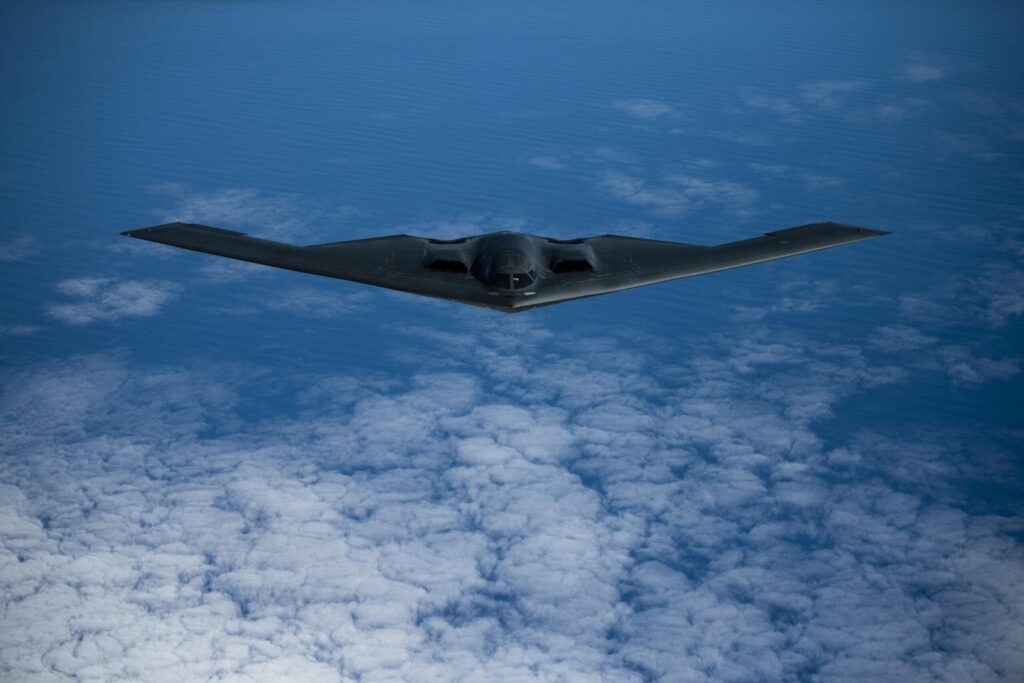In a strategic maneuver aimed at dismantling key infrastructure of Yemen’s Houthi rebels, US long-range B-2 stealth bombers have been deployed to target underground bunkers in the region. This covert operation signifies a significant shift in military tactics and highlights the ongoing efforts to weaken insurgent forces in the conflict-ridden area.
– Advantages of Using B-2 Stealth Bombers for Targeting Underground Bunkers
B-2 Stealth Bombers advantages for targeting underground bunkers:
Using B-2 Stealth Bombers for targeting underground bunkers provides several advantages in military operations. The stealth capabilities of the B-2 bomber make it difficult for enemy radars to detect, allowing the aircraft to penetrate deep into enemy territory without being detected. This makes it an ideal choice for striking heavily fortified targets like underground bunkers, where conventional aircraft may struggle to reach.
Additionally, the long-range capabilities of the B-2 bomber enable it to conduct precision strikes on underground bunkers from a safe distance. The bomber can carry a variety of munitions, including bunker-busting bombs, that are specifically designed to penetrate the thick concrete and steel structures of underground bunkers. This ensures that the target is effectively destroyed, making the B-2 Stealth Bomber a valuable asset in modern warfare.
– Impact of Precision Strikes on Yemens Houthi Rebels
Reports have emerged indicating that US long-range B-2 stealth bombers have conducted precision strikes on underground bunkers belonging to Yemen’s Houthi rebels. The strikes were carried out with the aim of targeting key infrastructure and military assets of the rebel group, which has been involved in a prolonged conflict against the Yemeni government.
The use of precision strikes by the US military reflects a strategic shift in tactics towards targeting specific locations and assets of the Houthi rebels. By focusing on underground bunkers, the strikes aim to disrupt the rebels’ ability to operate and communicate effectively, ultimately weakening their hold on the region. This marks a significant development in the conflict and underscores the ongoing efforts to address the security challenges posed by the Houthi rebels in Yemen.
– Strategic Considerations for Future Military Operations in Yemen
Following recent clashes in Yemen between government forces backed by the Saudi-led coalition and Houthi rebels, the United States has deployed long-range B-2 stealth bombers to target underground bunkers used by the rebels for military operations. This strategic move aims to disrupt the rebels’ ability to launch attacks and control territory in Yemen.
The B-2 stealth bombers, known for their ability to evade enemy radar detection, provide the U.S. military with a powerful tool to strike key Houthi targets effectively. By focusing on hitting underground bunkers, the U.S. aims to cripple the rebels’ infrastructure and reduce their operational capabilities. This tactic aligns with the broader strategic considerations for future military operations in Yemen, as the U.S. seeks to support the Yemeni government and its allies in defeating the Houthi rebels.
Closing Remarks
As the US Long-Range B-2 Stealth Bombers continue to target underground bunkers of Yemen’s Houthi rebels, the conflict in the region shows no signs of slowing down. The precision and stealth of these bombers highlight the advanced technology being utilized in modern warfare. However, the ramifications of these airstrikes on civilian populations and the ongoing political complexities in the region raise important questions about the impact of military intervention. It remains to be seen how these strategic strikes will ultimately shape the outcome of the conflict and what it means for the future of Yemen.


